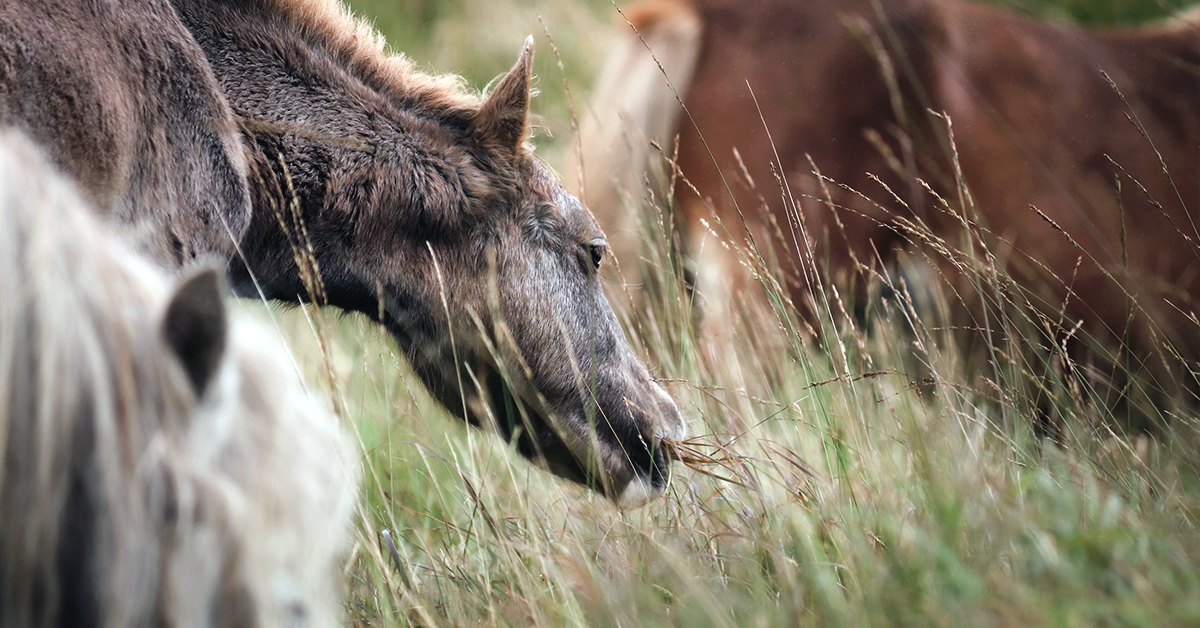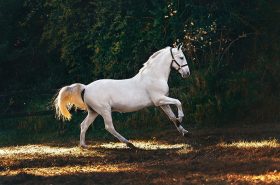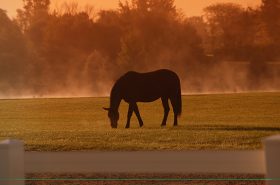Farm ownership comes with a lot of responsibility. Because horses are grazing animals, most thrive on good pastures. It can be difficult to keep your fields green and lush with them though. Horses tend to be hard on the grass. They will eat down to the ground and even pull the roots of the plant sometimes. If left to continuously graze, your pasture can become barren and weedy very quickly.
You’ve likely heard the term rotational grazing being used on horse farms. This type of field management method can be helpful when dealing with limited acreage and multiple horses. It does require a bit of planning though!

Stop Continuous Grazing
In the grazing method known as continuous, horses are left out on pasture without restrictions. The field never requires more than a half day or day of rest. Unfortunately, the horses will eat their favorite grass types, such as timothy and orchard, and leave the rest. As soon as new grass emerges, they’ll eat that down. The result is overgrazed, weedy pastures.
While this type of grazing is very popular because of its ease, it definitely has some serious drawbacks. It may work for those with large acreage, but for the average farm owner, there are better solutions.
Give Rotational a Try
As the name suggests, rotational grazing involves moving your horses from one pasture to another over a period of time. Depending on your herd size, you may have three or four paddocks step up. The horses will be turned out into the first one for a week or so, then moved to paddock number two and three, etc. When the horses are moved, the pastures enjoy rest periods and are able to regrow.

Don’t Forget the Dry Lot
In this grazing method, you’ll need a dry lot. This sacrifice area will be used when the weather is bad or the pastures need more rest. Some farm owners like to attach all of their grassy paddocks to their sacrifice space. They keep water, shelter, and hay in the dry lot. This keeps heavy traffic limited to one area. When the weather is very rainy or snowy, it’s advisable to close up the grass paddocks and keep your horses only in the dry lot.
Other Tips
Your system may look slightly different compared to another’s. The number of horses you have and the size of your paddocks will vary. If the grass isn’t being eaten down in a week, then your paddocks may be too big. You can create multiple paddocks of varying sizes by using a strong perimeter fence and moveable electricity on the inside.
Some people may need to create more than one system, depending on herd dynamics. They may have a mare field divided into four paddocks and a mixed group divided into three. Do what works best for you and your horses!
Ultimately, you may need to test your soil and invest in lime, fertilizer, and seed. Rotational grazing will improve and protect your fields, but sometimes they still need additional help. The winning combo for good field management is observation, planning, and utilizing a good grazing method.

Love this blog post? We think you will enjoy How to Use a Grazing Muzzle by Casie Bazay.



